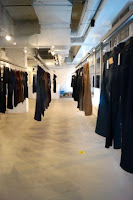My current article is in continuation of my previous article which I had written on “Future of retail”. My current article is my attempt to share some key insights and business cases which has helped retailers reinvent themselves to a new phenomenon i.e. Retail 3.0.
I would relate this concept of Retail3.0 to Indian Holy Scripture “Bhagavad Gita” which professes the concept of “Vasudeva kutumbh” which means nothing but Globalization (the world is your marketplace)
In Bhagavad Gita, there is a word called “ tathastu” which means literally “ You ask & You get it” & that’s what is the main premise of Retail 3.0 i.e. how to make the lives of shoppers more convenient by using technology as the main ingredient.
What is Retail 3.0?
Retail 3.0 is the evolution of multi-channel retail distribution. It blends technology with physical brick & mortar retail.
It makes customers (millennials) experience the brand and store more holistically by engaging them & reducing their pain points which a conventional shopping brings with it, for example carrying loads of shopping bags post-shopping to your vehicle and back home.
It Provides convenience and increases the brand recall as the shopper has got himself or herself personally involved in shopping experience both an emotional and intellectual levels. Hence he/she can turn out to be brand’s influencers thus generating more feet-ins and brand recall through social media.
How brands have adapted Retail 3.0?
Case 1:
Company: Bonobos - for men’s clothing store wherein shopper goes n tries out clothes. If shopper likes it, they buy online and garment gets delivered to their home.
Customer Benefit: No hassles of carrying shopping bags.
Retailer’s benefit: Their Retail concept requires smaller area stores that carry limited inventory as it does not require stock room resulting in the addition of more trial rooms for the customers to try merchandise hence smaller spaces means lower rentals and lower inventory holding costs and thus bringing more operational efficiencies.
Case 2:
Hointer 5: is the store wherein you can scan the type of denim jeans and brand of jeans that you want using an app & very pair of jeans that you want to try on will be delivered to a specific dressing room within the selected store of your choice.
Upon trying you may buy it from an app or in case you decide not to purchase then you drop the garment to an allocated shelf and the garment is removed from the app automatically as well.
Case 3: The Store
Brand based in Berlin is a unique example of Retail 3.0. The brand is basically fashion brand but the owners decided to do things differently and stand out from the clutter of fashion brands. They inserted a co-working space, restaurant, hair salon and music pods. They have created a space where their customers could spend the whole day lounging within the store.
Result: Increased dwelling times, Increase in ATV, Increase in feet-ins, higher stock-turns of merchandise, regular visits from fashionistas resulting in free word of mouth advertising as fashion influencers were clicking pics of new merchandise and posting it on their social networks while enjoying free in-store wi-fi and sipping their favourite blend of coffee.
I hope above real-life business cases would help my readers and retail professionals to re-energize their thoughts, their processes to re-invent their core purpose of business and would integrate their core business principles and values with technology and create a whole new retail ecosystem for themselves.
About the author:
Ritesh Mohan is a passionate Retail professional with over 20 years in the retail sector, handling some of the biggest brands in beauty, fashion and fragrances retail & FMCG sector. He has been instrumental in the growth of some of the regional brands as well in Middle East region. He specializes in Retail management, Product development, Brand management, Retail Operations, Sales Management, Business Management & Empowering business owners with his wisdom & experience of around two decades in the industry.

